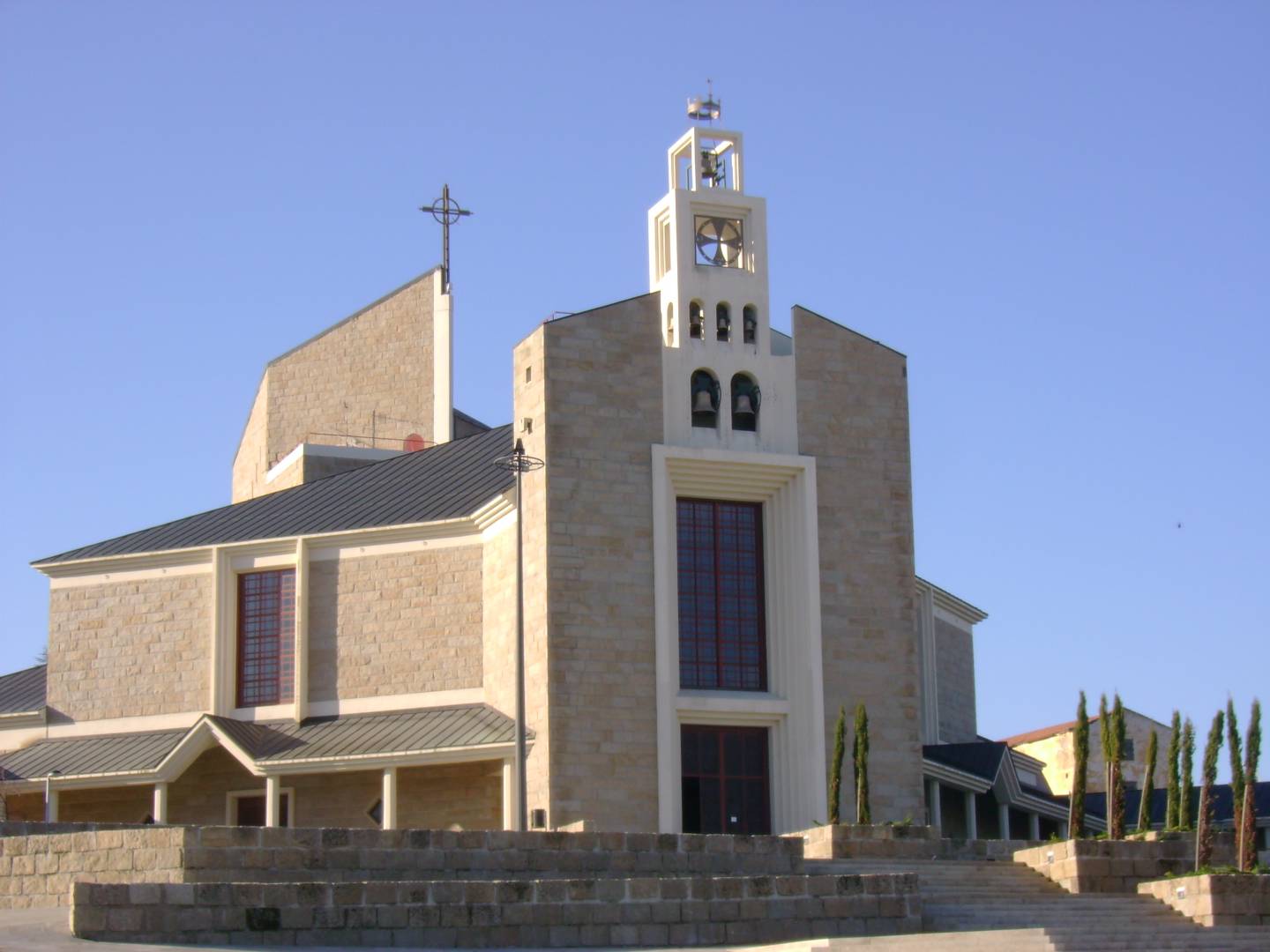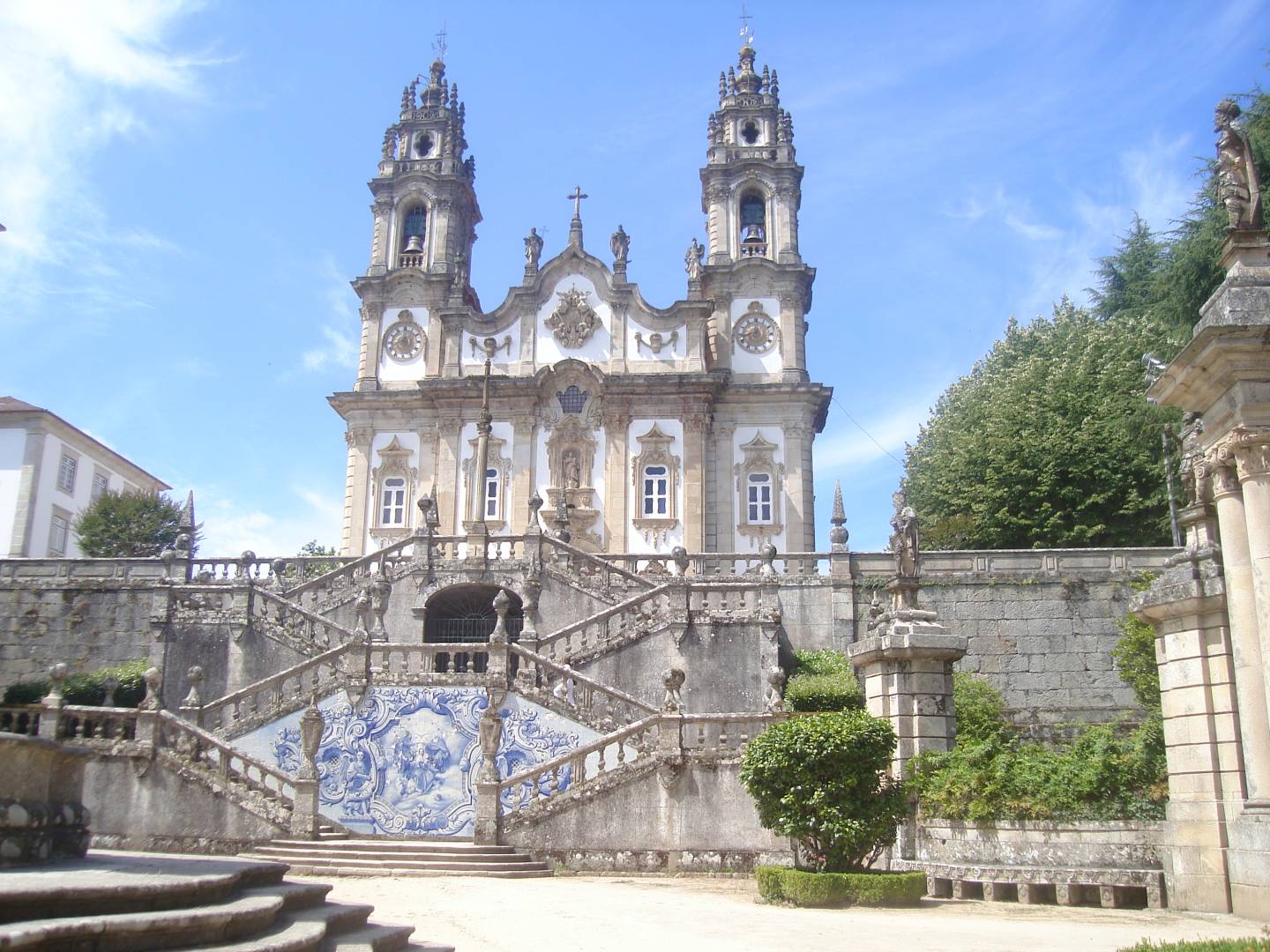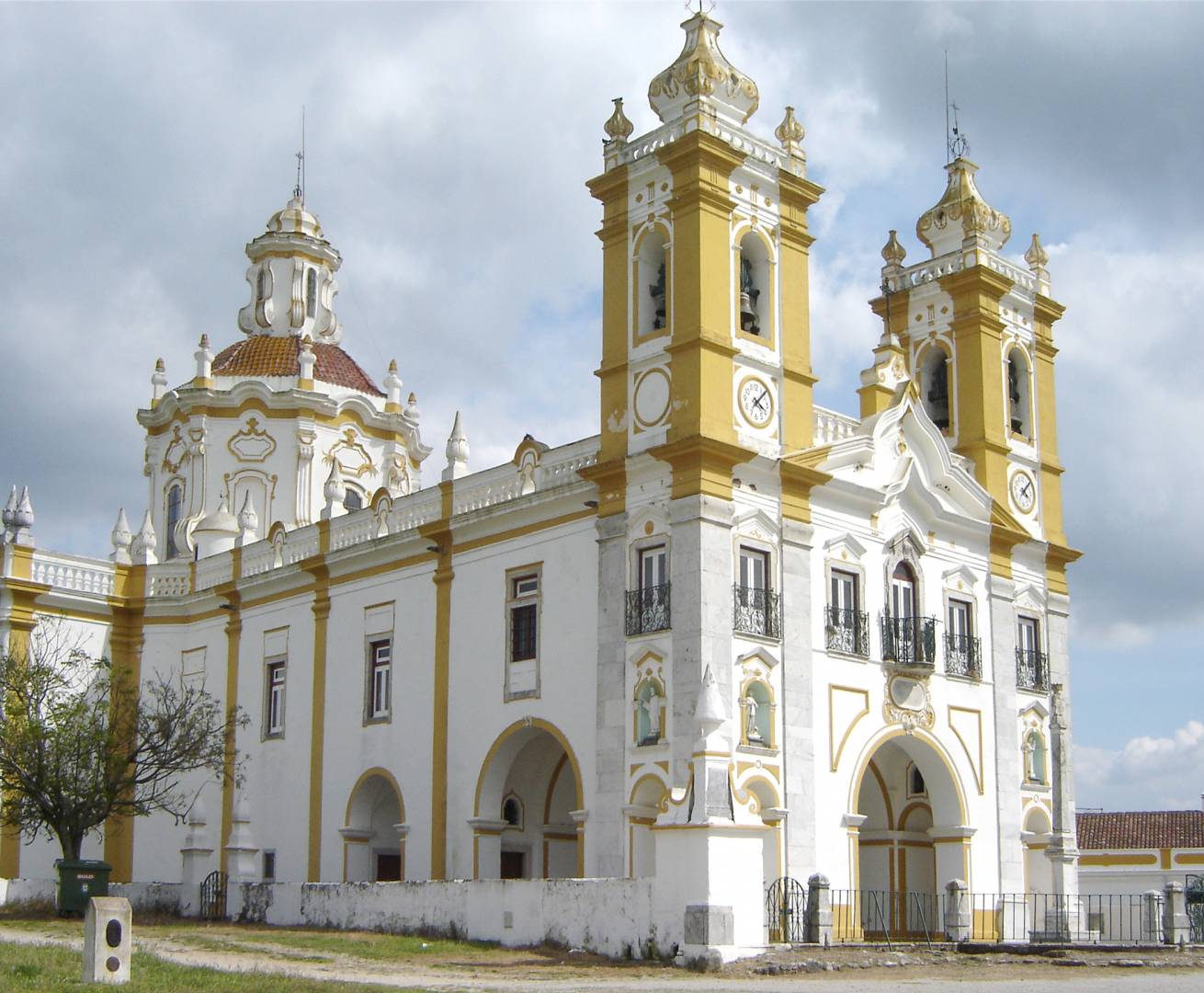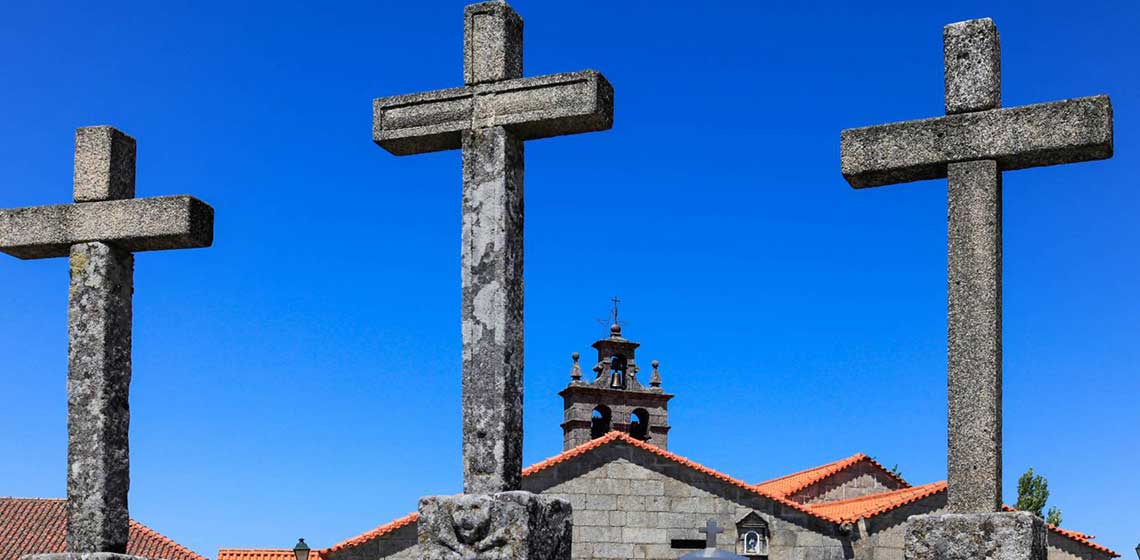Unmissable religious tours in Portugal
Portugal is not only about Fátima when it comes to religious itineraries that attract many believers or the curious ones. There are a lot of important places of catholic worship, which we can find both in important cities and in more remote places.
A chapel by the sea or a replica of the imposing Notre-Dame are just two of the references of the religious itineraries that All About Portugal suggests. Whether for devotion and Faith, pilgrimages, historical importance or differentiated architecture, religious tourism is expanding and attracts many people. The Sanctuary of Fátima receives millions of visitors annually from all continents, but Portugal is rich in religious heritage throughout its entire territory. If you are a fan of this theme set out to discover, alone or with your family, emblematic places of worship of the Catholic religion, located in the North and South areas, as well as in the Azores and Madeira archipelagos.
From Viana do Castelo to Braga there is a lot to see

The imposing Santa Luzia Basilica, in Viana do Castelo, is an excellent starting point for one of the most popular religious tours in the North of the country. It is a “Ex libris” of the Alto Minho capital, was completed in 1959 and is of Romanesque-Byzantine inspiration, with highlight for its rose windows, considered the largest in the Iberian Peninsula and the second largest in Europe. Located on Monte de Santa Luzia, it offers a wonderful view, in a setting that was considered by the National Geographic Magazine one of the most beautiful in the world. Every year, on the weekend after the Corpus Christi holiday, a pilgrimage is made from the city to the top of the mountain.
Also in Viana do Castelo, during the week of August 20, is held the Pilgrimage of Nossa Senhora da Agonia, known as the “Queen of Pilgrimages of Portugal”, which attracts thousands of people every year. This festival brings together religion, on the Church of Nossa Senhora da Agonia, and a more pagan side, whose highlight is the historical and ethnographic procession that takes place on Sunday afternoon. The beginning of the pilgrimage dedicated to Senhora D’Agonia, patron saint of fishermen, and which can be venerated in the Church with her name, dates back to 1772 due to the devotion of the men of the sea from the Portuguese coast and also from Galicia.
Continuing our itinerary, we suggest as the next stop the Basilica of São Bento da Porta Aberta, in the Terras de Bouro municipality, which is one of the largest Portuguese sanctuaries, with hundreds of years of tradition. The largest pilgrimages, which brings together thousands of believers, takes place on March 21, July 11 and August 12 and 13. However, throughout the year it is also common to see pilgrims, with family or friends, heading to “São Bentinho”, as it is popularly known. The beautiful surroundings with the Serra do Gerês or the Caniçada Dam is an extra reason that justifies a visit to this temple.
A little further down, in the neighboring municipality of Amares, is the beautiful Sanctuary of Nossa Senhora da Abadia, built in the 18th century. Inserted in an area where tranquility and green spaces abound, it is perfect for those looking for a place to pray and reflect. The “via sacra” is made up of 15 chapels, eight hexagonal, representing scenes from the life of Our Lady, and seven rectangular ones, with scenes from the Passion of Christ. The Sanctuary includes the church, the Casa das Ofertas, the Casa dos Quartéis and a cruise located in the center of the churchyard, a generously sized enclosure capable of welcoming many pilgrims.
The time has come to go to Braga, which is known as “Portuguese Rome” due to its large number of churches and where Holy Weekis lived annually intensely, attracting thousands of believers, not only from Portugal but also from the rest of the world, eager to attend the grand processions or participate in the celebrations. It is in the imposing and beautiful Cathedral that some of the most important religious ceremonies of Holy Week take place. It is the oldest Portuguese Cathedral, and it began to be built in the late 11th century and the Baroque is its most notorious artistic style. Make the most of it and also visit the Sé Treasure-Museum, where you can appreciate a rich and valuable collection.
There are, however, several places of worship that are beautiful and are worth a visit at any time of the year, for practitioners of the Catholic religion or just for lovers of architecture, due to its undeniable historical value. Starting with the Bom Jesus do Monte Sanctuary, classified by UNESCO as a World Heritage Site since 2019. It is a must-see spot in the city, with emphasis on the imposing Basilica, in Portuguese neoclassical style, the main altar, which represents the scene of Calvary with Christ Crucified, the famous stairs with the Via Sacra stations, or the typical elevator, powered by water.
Situated very close, at 570 meters of altitude, the Sanctuary of Nossa Senhora do Sameiro, is the second-largest Marian sanctuary in Portugal and every year receives thousands of pilgrims and visitors. In the Neoclassical-style Basilica, the vaulted roof, the bell carillon and various pieces of Sacred Art stand out. Framed by a leafy forest, the Sanctuary offers superb views over the city and the region. The Archdiocesan Pilgrimage to Sameiro, usually held on the first Sunday of June, welcomes thousands of believers that make the journey from the Cathedral to the Sanctuary.
The Treasures of the North Inland

Still in the North area, but inland, we suggest a visit to Bragança to see its modern Cathedral. Opened in 2001, it was the first cathedral to be built in Portugal in the 21st century, featuring contemporary architecture, with seating places in an amphitheater over an area of 10,000 square meters. The monument intends to reflect the region where it is located, from the construction materials to the gardens' flora.
Head to the city center to see the Igreja da Sé, with the peculiarity of having the main entrance located on one side, contrary to what is usual. The site reflects the renovations carried out by the Jesuits and the interventions carried out from 1768 onwards, when it was given cathedral functions. The sacristy has beautiful paintings on the ceiling, while the high altar has gilded carving, which also deserves to be properly appreciated.
Vila Real is the other district capital of the Trás-os-Montes region and also has a Cathedral. Known as Igreja de São Domingos, it was built in the 15th century with Romanesque and Gothic influences. Its facade has images of São Domingos and São Francisco de Assis. In 1837, it suffered a major fire that destroyed part of the inside heritage, and the tower was added in the 18th century. It has become a Cathedral with the creation of the Vila Real diocese, in 1922.
In the same municipality, the Senhora da Pena Procession annually attracts, on the second Sunday of September, thousands of people to the Mouçós’ Parish. This religious manifestation is distinguished by the size of some of its religious stands, which sometimes reach 23 meters height and weigh many kilos, being carried by more than 100 people. The story goes that, in a demonstration of Faith, the “giant” and colorful stands intend to “touch” the sky, being higher than the Chapel of Senhora da Pena itself, considered one of the most important sanctuaries in the region. At the end of the procession, the peculiar “dance of stands” takes place.
Shrines that attract thousands of pilgrims

The beautiful Sanctuary of Nossa Senhora dos Remédios, Lamego “ex libris”, in the north of the Viseu district, is the next stop. The beautiful church, of Baroque inspiration, began to be built in 1750 and “owes” its name to the prayers of those who suffered from some kind of illness and asked for protection to the Virgin with the Child in her arms. The blue and white tile panels, with scenes from the Virgin’s life, are one of the highlights of the interior. The monumental staircase leading to the sanctuary, with 686 steps and several levels, is also highly appreciated. Between the last weeks of August and the first weeks of September, there is a pilgrimage dedicated to Nossa Senhora dos Remédios, one of the largest in Portugal and which combines religious and profane rituals.
Still in the Viseu district, but a little further down, is the Sanctuary of Nossa Senhora da Lapa, one of the oldest in Portugal, with more than 500 years of history, and one of the most visited places in the municipality of Sernancelhe. The history of Lapa begins at the end of the 15th century when a young mute shepherdess discovered an image of Our Lady under a rock that was difficult to access. The girl's devotion to the image, which her mother wanted to destroy, earned her the gift of speech and since then the miracle has spread and the legend has crossed generations. A curious aspect is that the “cave” where the image was discovered has a very first stone, trough which everyone passes, except those who have committed serious sins.
Continuing on the path of religious itineraries of great significance, and towards the south of Portugal, the beautiful Convento dos Congregados stands out in the urban landscape of the Alentejo city of Estremoz. It began to be built in 1698 and the “undulation” of the main façade of the church gives a dynamic and rare effect to the Alentejo architecture. There are several sets of tiles, worthy of being observed and representative of the King D. João V’s time social hierarchy or of episodes from the Gospels and the lives of several saints.
Évora, capital of the district, could not be missing from this itinerary, as well as its beautiful Cathedral, dedicated to Santa Maria. Started in the 13th century, it is the largest medieval cathedral in the country and has Romanesque and Gothic styles, with its ogival portico standing out, garnished with sculptures of the Apostles. Inside, there are several outstanding architectural and artistic elements, such as the Renaissance organ and the choir stalls. The Baroque-style chancel is from the 18th century. Also visit the Museum of Sacred Art, where you can appreciate pieces of painting, sculpture, jewelry and vestments.
Another popular spot that arouses great popular curiosity in Évora is the Chapel of the Bones, which is located inside the Church of São Francisco. Not recommended for the most impressionable, it was built in the 17th century and its three naves are almost entirely made up of human bones and skulls, which aim to convey the message of the transience and fragility of life. The thousands of human bones are intended to illustrate the idea of the founding monks, very explicit in the sentence found at the entrance to the chapel: “We bones that are here, we wait for yours”.
A religious itinerary in the Alentejo and Algarve

Still in the same district, the beautiful Sanctuary of Nossa Senhora de Aires, in Viana do Alentejo, is the largest Catholic temple in southern Portugal and one of the largest places of pilgrimage in this region. The 16th century image of Nossa Senhora de Aires stands out, with Jesus dead in her arms, which is the object of great Faith. The pilgrims' belief is clear in the Casa dos Milagres, a part of the Sanctuary, which features a collection of devotional testimonies, from old photographs to wedding dresses or hair braids. It is considered one of the references of the Baroque style in that area, due to the erudition of its construction.
Another Cathedral worthy of being properly appreciated is Beja’s, also known as Igreja de Santiago Maior. In a mannerist style, it was built in 1590 and the subject of several improvement works, such as those that took place in 1932 to adapt it to the functions of episcopal see, which remain until today. Inside stand out: the main chapel's altarpiece in gilded woodcarving, the polychrome altarpieces in the side chapels and the São José altar painting. In the chapel of Nossa Senhora da Conceição, the set of blue and white tile panels deserves to be highlighted.
In the same municipality, the unique Ermida de Santo André is another interesting proposal. According to tradition, the chapel was founded by King Sancho I to celebrate the conquest of Beja from the Moors in 1162. However, the ogival reconstruction took place at the end of the 15th century. It is a National Monument and is part of the tradition of Gothic-Mudejar buildings, common in some places in the Alentejo, with emphasis on the narthex, the conical pinnacles and the battlements.
Further south is the Algarve, very famous for its beaches. However, it is also rich in religious heritage and our first suggestion is the Sanctuary of Nossa Senhora da Piedade, in Loulé, built in the mid-20th century next to the chapel with the same name, dating from 1553. The large temple is the central point of the Festas da Mãe Soberana, dedicated to Nossa Senhora da Piedade, and which for almost five centuries have gained great popularity, considered the most popular religious event held in the Algarve and one of the largest south of Fátima. The festivities last 15 days and attract thousands of believers at Easter time.
From Loulé we head to the neighboring municipality of Silves, where its Cathedral stands out among the white houses, being one of the most notable Gothic-inspired temples in the Algarve. This National Monument dates from the end of the 13th century and is distinguished by the use of red sandstone, known as Grés de Silves, in its construction, which gives it differentiating characteristics. The central nave is about 18 meters high and inside you can see several sarcophagi, such as the tomb of King D. João II.
Our next suggestion is the Church of Nossa Senhora dos Navegantes, located right on the seafront in Armação de Pêra, a popular location in the summer for its beaches. The image of Senhora dos Navegantes that can be found in the Church is one of the most venerated in the region, mainly by the fishing community. Moreover, the original maritime procession in honor of the patron saint, held on the second Sunday in August, in which the fishermen's boats are decked out, is a much appreciated and participated religious festivity.
Continuing along the line of beaches, a few kilometers away, but already in the municipality of Lagoa, is the Chapel of Nossa Senhora da Rocha, which offers a breathtaking view of the Atlantic, due to its location on a promontory right next to the sea. The Chapel was built in the 16th century in the Ermida, which was once a popular pilgrimage site. Permanently closed to the public, the Chapel has a “secret passage” that connects it to the sea. If the weather is nice, take the opportunity to take a dip on the beach, which has a tunnel dug between the rocks.
Iconic works on the islands

From the Algarve, we set off in search of the islands' religious itineraries. We start the tour in the Azores, in Ponta Delgada, at the Convent of Nossa Senhora da Esperança. This temple is the central spot of the Senhor Santo Cristo dos Milagres festivities, the largest religious festival in the archipelago, which gathers thousands of people. Legend has it that at a time when earthquakes were frequent, the population made a procession to try to calm the fury of nature and one of the men, who carried the religious stand, tripped and the image fell to the ground without breaking. According to tradition, since then the earthquakes stopped and the procession took place every year on the fifth Sunday after Easter.
Another popular religious spot on the island of São Miguel is the beautiful Ermida da Senhora da Paz, in Vila Franca do Campo, built before 1522, in the place where a shepherd would have found an image of Our Lady. Built in 1968, the impressive staircase has 10 levels, which symbolize the Lord’s Prayer of Joyful and Sorrowful Mysteries, and 100 steps, corresponding to the Hail Marys. The Glorious Mysteries, on the other hand, are found in five tile panels, in the churchyard, at the back of the Ermida, which simultaneously serves as a viewpoint, providing a portentous view over the islet and the sea. The Church is of Baroque style, typical of the region.
Still on the São Miguel island, in the municipality of Povoação, the Chapel of Nossa Senhora das Vitórias stands out for its grandeur and location, in Lagoa das Furnas, well known for its delicious stews. The Chapel, in Neo-Gothic style, was inspired by some great European cathedrals and opened in 1886, as a result of the devotion of an inhabitant. In addition to the distinctive exterior, special attention is also paid to its beautiful stained-glass windows, which personify scenes from the life of Our Lady, from her birth to her assumption. It is one of the tourist attractions in the region and attracts many pilgrims and visitors throughout the year.
The Misericórdia Church of Angra do Heroísmo, on Terceira island, is our last suggestion in the Azores. Painted in white and light blue, the beautiful temple was built in the 18th century and stands out for its Baroque architecture. Located in the historic center, classified as a World Heritage Site by UNESCO, the Church, which faces the beautiful bay of the city, has a central nave flanked by two bell towers. Inside, the two altars that are facing each other stand out, one dedicated to the Holy Spirit and the other to Santo Cristo das Misericórdias, as well as the six side chapels that have sculptural works and paintings of value.
To finish off this trip through some of the most beautiful religious itineraries in Portugal, we must go to the Madeira island and visit the Cathedral of Funchal. Located in the throbbing “heart” of the city, it was completed in the 16th century and has traces of the Manueline and Gothic styles. The façade has a Gothic portal with eight archivolts in an ogival arch, which gives it great grandeur. The material used is ashlar from Cabo Girão, reddish brown rock. The Mudejar ceiling decorated with the island’s cedar, as well as the chairs and the beautiful polyptych of the chancel with 12 oil paintings are also impressive.
Our last suggestion is the beautiful Parish Church of Our Lady of the Rosary, which arouses curiosity as it is considered a smaller scale replica of the famous Parisian cathedral of Notre-Dame. Also known as the Igreja Matriz of the Jardim do Mar parish, in the municipality of Calheta, the small temple was inaugurated in 1907. Built close to the sea, where initially was a Chapel, it has a Gothic revivalist style. The Feast of Nossa Senhora do Rosário, its patron saint, takes place at the beginning of October.
Recommended
